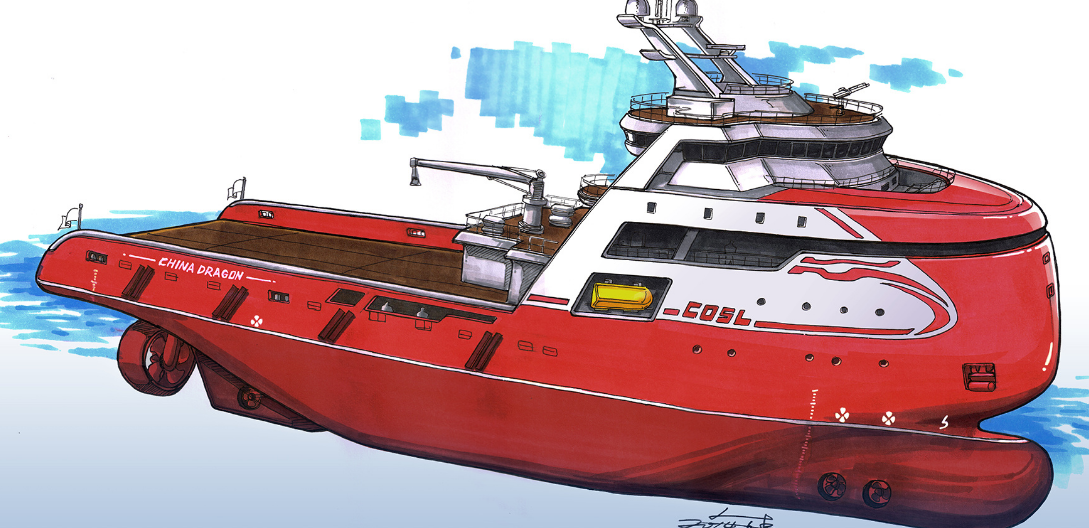The shipbuilding industry has strong periodicity, and the mismatch of supply and demand is the underlying logic of cycle initiation

The overall supply of the industry is difficult to increase in the short term, and the supply is extremely inflexible. We don't think the shipyard is likely to expand significantly in the next three years. In China, due to the Yangtze River Protection Law and the restrictions on the approval of land and shoreline resources, there is basically no possibility of new shipyards. Since 2009, the National Development and Reform Commission has not approved any new shipyards, and the increase mainly comes from the relocation and expansion of Waigaoqiao Shipyard. And some have been out of the dock to return to life (recently Hengli Heavy Industry injected capital to restart STX (Dalian), but personnel training, equipment installation and commissioning and mass production take time). In South Korea, Hyundai Heavy Industries restarted Gunsan Shipyard in 2023H1 (but the increase is limited), but the bigger problem is the decline of employees and a large gap of skilled workers. On the whole, the new supply is very limited at present, and the supply side is extremely lacking in elasticity. According to Clarksons' forecast data, the overall utilization rate of the dock in the industry will gradually increase from the current level of less than 80% to about 95% in the next five years.
In 2023-2024, the tension between supply and demand of the ship market will not be effectively alleviated, and the ship market will continue to improve. From the demand side, this shipping and shipbuilding cycle is more structural than systematic, and the driving factors are more on the supply side. Compared with the last round of ship manufacturing super cycle (2002-08), the cycle process of different ship types in this cycle is quite different, and the market of container ships, LNG carriers, car ro-Ro ships, oil tankers/offshore, dry bulk carriers has improved in turn, so the new ship order cycle of this round is relatively flat compared with the previous round. From the supply side, the rigid clearance of shipbuilding industry capacity and the extreme lack of elasticity have led to the ongoing tension in shipbuilding capacity, which has supported the rising ship prices. Overall, the future benefit from the LNG carrier and car carrier market continued to improve, as well as offshore equipment, oil tankers and bulk carrier market recovery, is expected to 2023-2024 ship market supply and demand tension will not be effectively alleviated, new ship prices are expected to continue to rise, the ship market continues to improve.
This cycle is dominated by large new energy ships with high added value, and the advantages of head shipyards are prominent. In this cycle, the demand for high-value ship types (container ships above 12,000 TEU, LNG carriers above 140,000 square meters) is far better than that for low-value ship types (dry bulk carriers, small container ships, small tankers, etc.), and the value of new orders per DWT in 2022 will reach 1,455 US dollars /DWT (the same ratio +69.8%). Head shipyards and small and medium-sized shipyards face big differences in supply and demand patterns. The dominant ship types of head shipyards are mainly oversized container ships, LNG carriers, VLCC, wind power ships, car carriers, luxury cruise ships, etc., all of which are difficult/high-view ship types, difficult to obtain in a dock. Small and medium-sized shipyards are limited by shoreline resources, personnel and technology, the main ship type is small and medium-sized dry bulk cargo ships and container ships, more to undertake spilover demand (large shipyards are fully booked), orders are sustainable, no actual bottleneck supply. According to Clarksons statistics, only 150 shipyards in the world have received new orders in 2022, while about 400 have not received any orders, and the leading shipyards have benefited significantly in this cycle.
- EMERSON
- Honeywell
- CTI
- Rolls-Royce
- General Electric
- Woodward
- Yaskawa
- xYCOM
- Motorola
- Siemens
- Rockwell
- ABB
- B&R
- HIMA
- Construction site
- electricity
- Automobile market
- PLC
- DCS
- Motor drivers
- VSD
- Implications
- cement
- CO2
- CEM
- methane
- Artificial intelligence
- Titanic
- Solar energy
- Hydrogen fuel cell
- Hydrogen and fuel cells
- Hydrogen and oxygen fuel cells
- tyre
- Chemical fiber
- dynamo
- corpuscle
- Pulp and paper
- printing
- fossil
- FANUC
- Food and beverage
- Life science
- Sewage treatment
- Personal care
- electricity
- boats
- infrastructure
- Automobile industry
- metallurgy
- Nuclear power generation
- Geothermal power generation
- Water and wastewater
- Infrastructure construction
- Mine hazard
- steel
- papermaking
- Natural gas industry
- Infrastructure construction
- Power and energy
- Rubber and plastic
- Renewable energy
- pharmacy
- mining
- Plastic industry
- Schneider
- Kongsberg
- NI
- Wind energy
- International petroleum
- International new energy network
- gas
- WATLOW
- ProSoft
- SEW
- wind
- ADVANCED
- Reliance
- YOKOGAWA
- TRICONEX
- FOXBORO
- METSO
- MAN
- Advantest
- ADVANCED
- ALSTOM
- Control Wave
- AB
- AMAT
- STUDER
- KONGSBERG
- MOTOROLA
- DANAHER MOTION
- Bently
- Galil
- EATON
- MOLEX
- Triconex
- DEIF
- B&W
- ZYGO
- Aerotech
- DANFOSS
- KOLLMORGEN
- Beijer
- Endress+Hauser
- MOOG
- KB
- Moxa
- Rexroth


Email:wang@kongjiangauto.com

















































































































